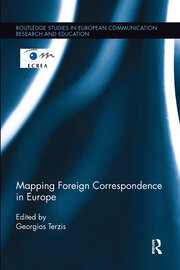 Book Description
Book Description
The book studies the current trends of foreign correspondence in Europe. The EU’s expansion has had abundant effects on news coverage and some of the European capitals have become home to the biggest international press corps in world. So, who are these "professional strangers" stationed in Europe and how do they try to make their stories, that are clearly important in today’s interconnected world, interesting for viewers and readers?
This book represents the first Pan-European study of foreign correspondents and their reporting. It includes chapters from 27 countries, and it aims to study them and the direction, flow and pattern of their coverage, as well as answer questions regarding the impact of new technologies on the quantity, frequency and speed of their coverage. Do more sophisticated communications tools yield better international news coverage of Europe? Or does the audience’s increasing apathy and the downsizing of the foreign bureaus offset these advances? And how do the seemingly unstoppable media trends of convergence, commercialization, concentration, and globalization affect the way Europe and individual European countries are reported?